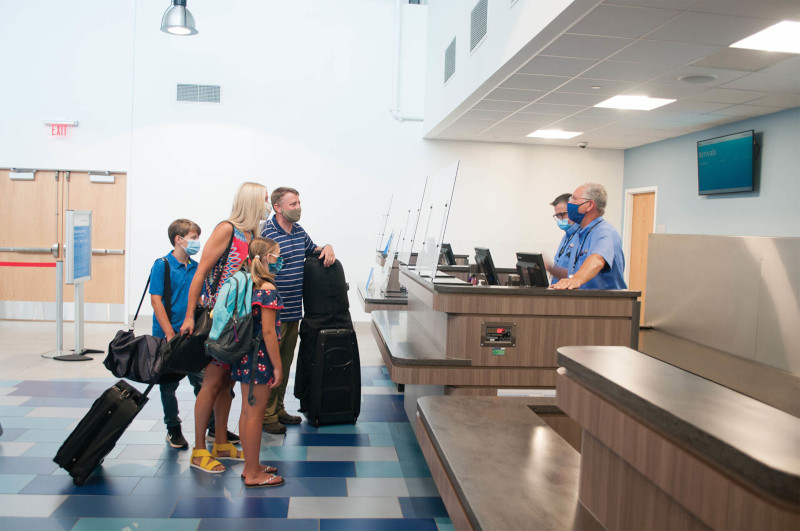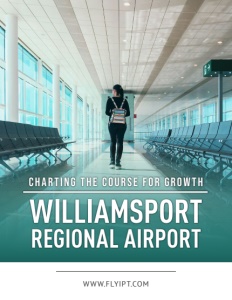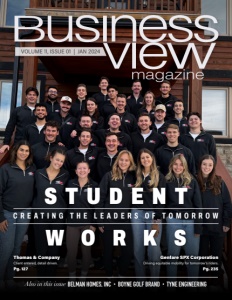Williamsport Regional Airport
Charting the Course for Growth
A successful regional airport’s transformation within the challenging aviation landscape
As we adapt to the new normal following a global pandemic, large central hubs like regional airports stand at the crossroads of growth and expansion. Ascending to new heights means meticulous attention must be paid to both high-level strategy and the operational grassroots.
Fostering robust air service partnerships and comprehensive infrastructure development are paramount. Cultivating alliances with major carriers, negotiating new routes, and investing in state-of-the-art facilities are keystones of strategic vision.
Simultaneously, success at the grassroots level hinges on impeccable service delivery and community integration. Engaging with local businesses, offering competitive leasing opportunities, and strategically managing real estate assets contribute to the airport’s economic impact beyond aviation.
At its core, the Williamsport Regional Airport manifests as a vibrant ecosystem with all of its systems running smoothly in sync. During the COVID-19 Pandemic, airports weathered challenges that were shared mutually by airports across the world.
However, collective resilience and adaptability made a difference here. Even after losing scheduled flight service during the lockdown, leaders like Executive Director Richard Howell and key staff members have come together and kept Williamsport on its already straightforward path of development.
While making operational pivots, the hum of activity on the tarmac, the welcoming ambiance within terminals, and the collaborative synergy between the airport and its community all remain safeguarded without disruption.
Williamsport is showing its region that it’s more than a transit hub; it’s a catalyst for economic expansion, a source of local pride, and a gateway that seamlessly connects people and possibilities. This success resonates not just in the altitude of flights but in the depth of its roots within the community it serves.
A New Position of Value in Aviation
 During the turbulence of the pandemic, the airport found itself navigating uncharted territory, operating without offering commercial service. However, throughout that period and even now, it remains a hive of activity, with a bustling general aviation scene.
During the turbulence of the pandemic, the airport found itself navigating uncharted territory, operating without offering commercial service. However, throughout that period and even now, it remains a hive of activity, with a bustling general aviation scene.
“Our tower operates from 6:30 am until 10:00 pm, and we do provide after-hours operations to the FBO, who is on call,” Howell says.
Interestingly, the shift away from scheduled commercial services has made way for the airport to offer more support to the notable corporate presence in the area. Now, it’s positioned itself as more of a reliable center for business activity with ample space for hangar support and full-service FBO fuel and maintenance accommodations.
Energy Aviation, the full-service Fixed Base Operator (FBO), stands at the forefront, ensuring smooth operations. From comprehensive services to rental options, the FBO, aptly named for its forward-looking vision, is a cornerstone in the airport’s pursuit of excellence.
Currently, Williamsport plays a role as an economic catalyst for the city and its surroundings, and corporate flights have been playing a significant part in this vision. The airport is steadily returning to the estimated $170 million economic impact it once had in the pre-COVID era.
Additionally, in the background of the airport’s corporate operations, Howell and his team have been actively marketing Williamsport to new carriers to renew the airport’s scheduled flight services.
Ideally, scheduling two daily flights to the region would be a perfect starting launch pad and would allow an instant return to service without an overwhelming rate of expansion.
Balancing Space and Regional Demand
Williamsport’s robust array of facilities and spaces serve as a strong indicator that it will once again appeal to the airlines to which it’s currently being marketed. It has a little over 30 T Hangars that host both small and large aircraft for things like maintenance and storage.
Any prospective airline would have to notice, as those facilities still manage to see a high level of activity one would expect to see at only the largest and busiest authorities.
This is done thanks to the many local relationships that have been formed between Williamsport Regional Airport and its surrounding region.
“We’re completely supportive of what goes on in the city and its recruitment efforts for new companies and business coming into the area… we can still support [their] corporate jets and aircraft transitioning through,” Howell says, referring to the fact that the community consistently leverages Williamsport’s 30 hangars, which are open to local general aviation partners to rent and use.
Williamsport also has several non-aeronautical related properties that it rents out. Old service stations and warehouses now act as trustworthy facilities for large companies like ABC Supply.
The Pennsylvania College of Technology also has a presence on Williamsport’s airfield, near the main terminal building, except they actually own the property as opposed to renting it like many others.
In addition to the convenient spaces that Williamsport offers its community, it also provides key car services as well.
“We have Enterprise, Alamo National, and the local Hertz providers in our buildings. So, if folks need rental cars, we can provide that service to them,” Howell says.
From FBO-managed spaces to non-aeronautical properties like warehouses and maintenance facilities to convenient rentals, The airport’s portfolio of services showcases a strategic balance between aviation-related and general business activities.
Setting the Stage for Expansion
With so many on-airport benefits being extended to such diverse entities, it is a clear sign that Williamsport’s influence extends far beyond the runway.
And while this consistent activity is good, it also poses the challenge of hangar capabilities and long-term functionality. So naturally, the airport’s hangar landscape sees frequent upgrades, with newer facilities coexisting with older yet functional ones.
While there was contemplation of expanding hangar space, the current focus leans toward enhancing existing facilities, including the prospect of introducing heated hangars to meet evolving needs.
“We’ve been pretty busy this year. We’re finishing up rehab of Runway 1230, our second runway,” Howell states, noting just one of the many recent upgrades that have taken place. The airport has also constructed a new passenger terminal as well as renovated its control tower.
There is also a maintenance facility that is nearing completion. The facility will be available to rent after many years of housing the airport’s snow removal equipment, which is getting its own dedicated space. To accomplish all of this, Williamsport has been using a mix of carrier funding and matching up with state funds.
The goal is to put itself in the best position to handle and execute some of the future aspirations that it is working towards, like a flight school. While discussions about introducing flight school activities have surfaced, challenges, primarily related to insurance and liability, have become a topic of consideration.
Despite the obstacles, there’s a collective desire to foster a learning environment, with the potential involvement of institutions like the Pennsylvania College of Technology.
Even further, there are still ongoing meetings to discuss potential timelines for the return of scheduled services; however, according to Director Howell, “airlines are very risk-averse, so it’s difficult.”
However, one thing is clear: the ongoing infrastructure upgrades demonstrate that behind the scenes, Director Howell is committed to a strong vision of a resilient future for the airport.
The director, with a rich aviation history, brings two decades of air service development experience to the helm. His dedication to restoring air service to the region and navigating financial challenges reflects the airport’s commitment to long-term sustainability.

Skyward Vision: Charting 2024 and Beyond
Looking ahead, the airport’s primary goal is to reinstate commercial air service, a complex task given industry uncertainties. Simultaneously, fiscal challenges loom after the expiration of COVID-related funding in May, which means that budgeting will be extremely important moving forward.
Post-COVID, Williamsport Regional Airport has faced both headwinds and tailwinds. The decline in general aviation activity during fuel price spikes underscores the nuanced nature of recovery.
Currently, both airlines and Williamsport are waiting to see what the 2024 aviation market will look like before making any definite moves on scheduled flight services and the like.
Ultimately, Williamsport faces a pivotal decision about its identity and considering alternative paths if commercial service proves elusive. However, based on how active it has been despite not offering those services, it is clear that whatever path it takes will continue to follow a triumphant upward trajectory.
In conclusion, Williamsport Regional Airport remains a dynamic player in the aviation landscape, poised for growth, confronting challenges, and embracing transformation.
As 2024 approaches, the airport continues its journey, aspiring to soar to new heights while remaining grounded in its commitment to the community and the skies it serves.
AT A GLANCE
Williamsport Regional Airport
What: A thriving regional airport navigating the complexities of the aviation industry with a focus on growth, community integration, and operational resilience.
Where: Williamsport, Pennsylvania
Website: https://flyipt.com/



